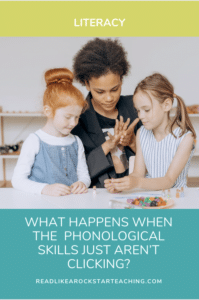
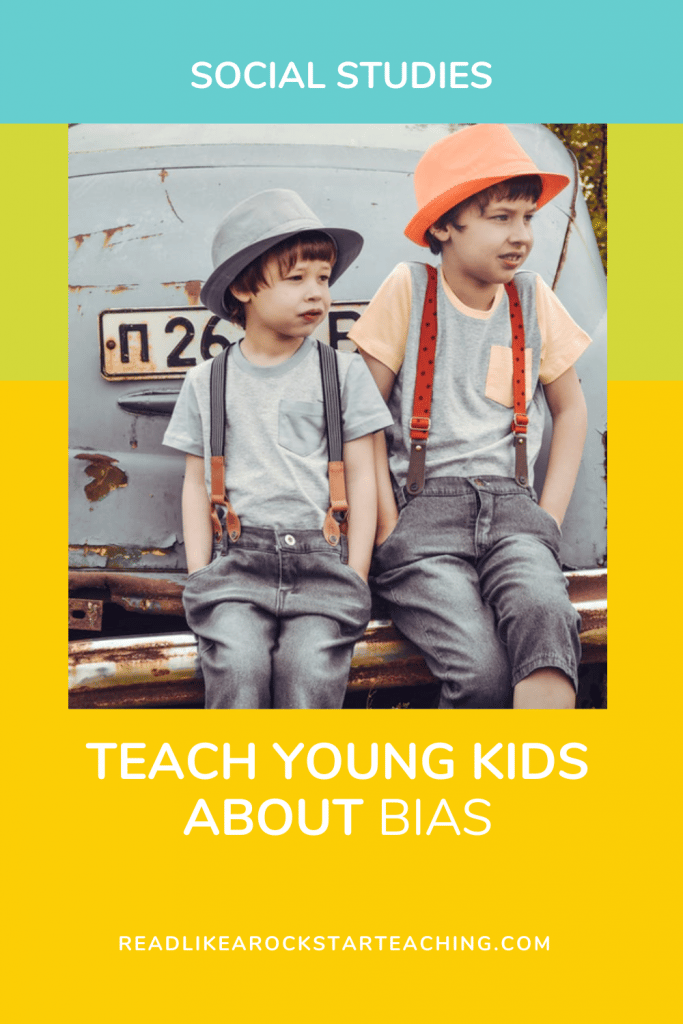
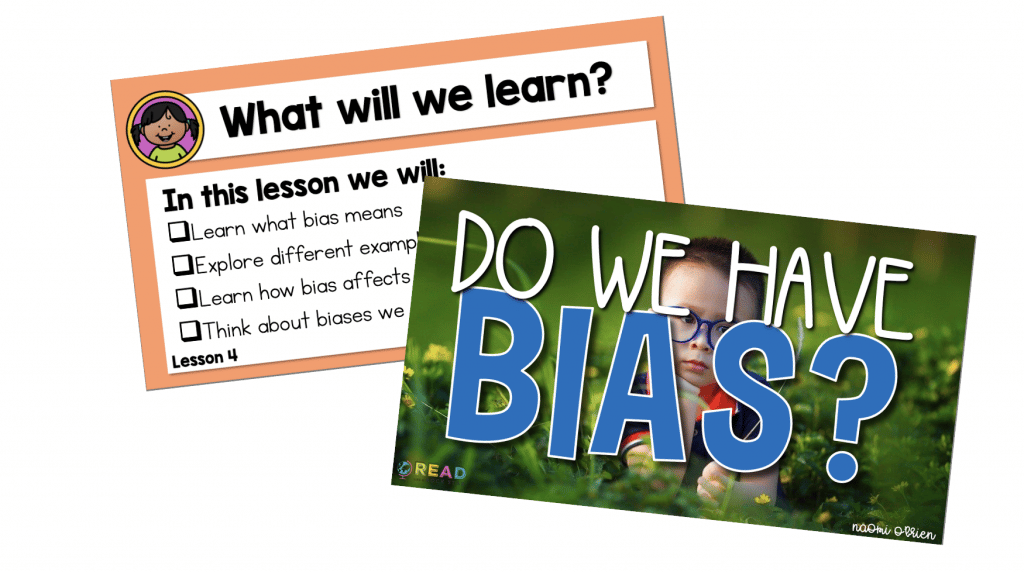
If you have been talking to your kids about diversity, race, and identity, you can teach young kids about bias next. Whether we want to have them or not, we all have biases. Biases around foods, experiences, people, and pretty much anything else. Biases are basically ideas and opinions we have about something without an experience to back it up. Today, many ignorant comments (Where are you really from?), small microaggressions (You’re pretty for a black/fat/etc girl! How do you speak without an accent? Were you born here?), to full blown racism, all come from internalized conscious and unconscious bias. How powerful to teach young kids about bias, how to identify it in themselves, and say no! We could re imagine a new way to be, where we are open to all people!
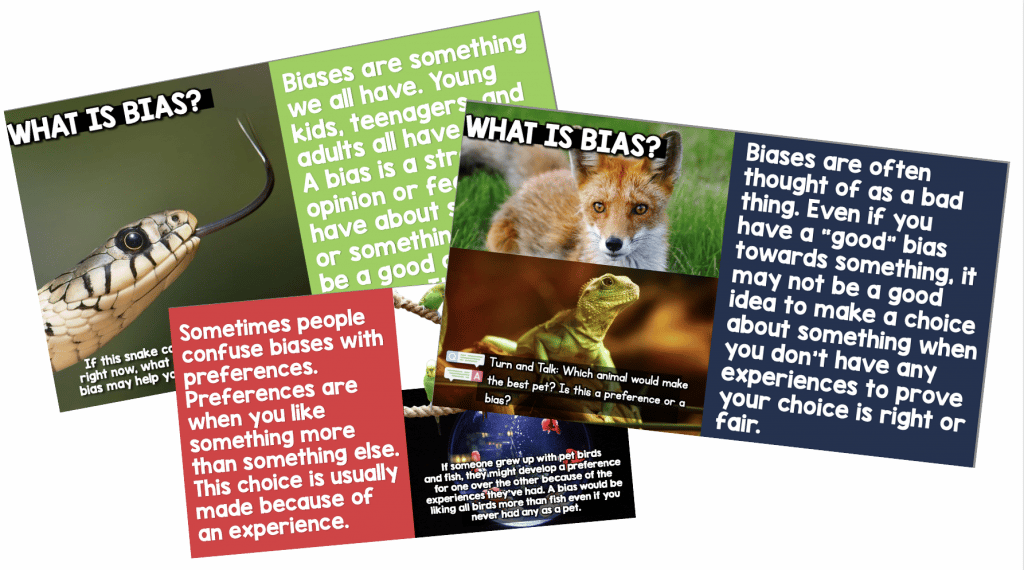
How do we choose our friends?
How do we decide who to partner with in class?
How do we decide if we want to engage in a new experience or not?
Try a new food?
Often, the answers to these questions are from our biases.
Biases come from all sorts of places. Since kids are sponges, they soak up messages from all around them:
These are a lot of places to get information! This makes it vital to teach young kids about bias early on. Biases can be good or bad. While some biases can be good, any decision made unconsciously will close us off from experiences and we may make the “right choices” for the wrong reasons. Kids are also fully able to learn the difference between a bias and a preference. By naming and defining bias, kids can be ready to analyze some of their own thoughts and why they felt that way. They can then remind themselves to be open to new people and experiences, deciding if their feelings make sense and are fair, or not.
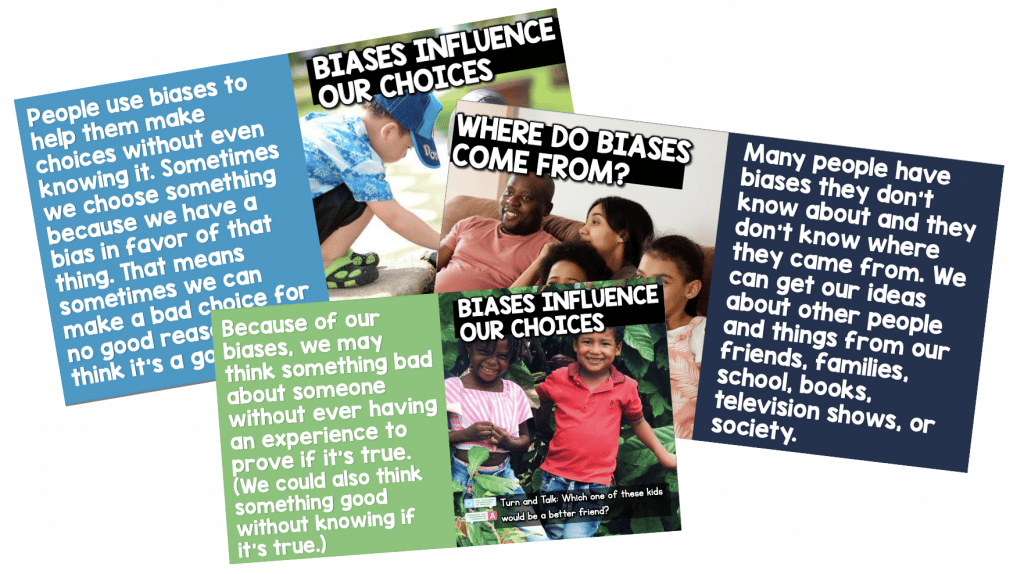
When I teach young kids about bias, and then pose questions like, “Who would make the better friend?” while showing them two pictures, they are stumped. They eventually come around and shyly say, “I’m not sure. I can’t decide from looking.” BINGO! That’s what we were looking for, and you’re right. You cannot tell anything about anyone just from looking.
We were then able to talk about how we would decide what made a good friend. Was it their character? Their sense of humor? Their kindness? Since these chats, I notice kids are more detailed in their rejection of someone, and it is always based in some version of “They’re not nice to me,” or “They hurt people.” Gone are the reasons of “They’re a girl/boy.”
When kids start watching a show and I notice it is reinforcing gender biases, or not diverse enough, they understand why such a show may be harmful to their own world view. They are able to challenge it and say “that’s not right.” On the flip side, they even see shows and comment, “Wow, there is a lot of diversity here!” This is great, because diversity shown in the right way challenges bias.
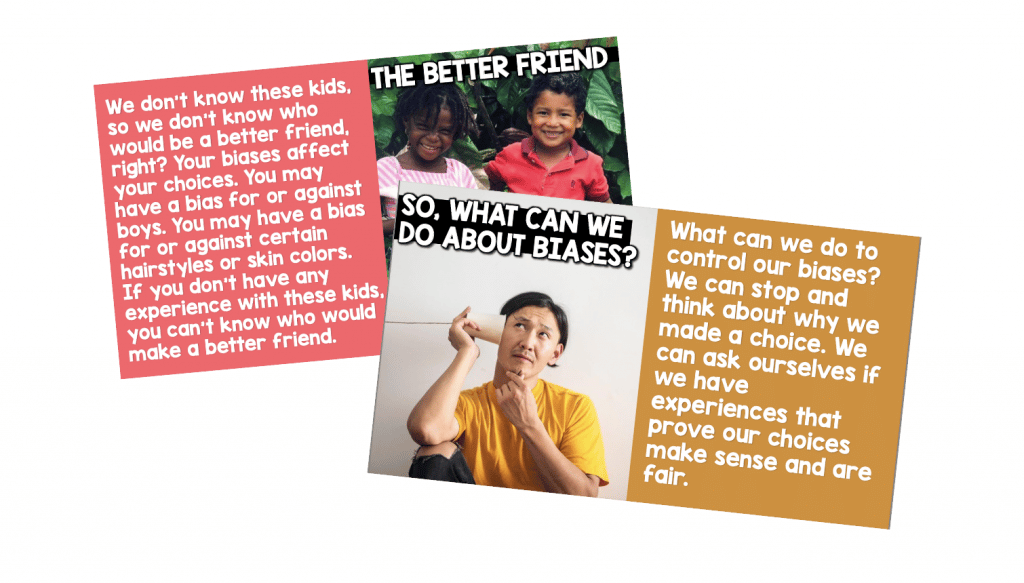
When we begin to teach young kids about bias, unfortunately some adults may get anxious at the potential for push back. Included in this lesson are easy teacher guides to help you on your way, as well as parent/caregiver communication to ease the nerves. Being upfront and open can make things easier. Also included are worksheets which pose scenarios for “judging” a person. Kids can practice having a “good” bias or a “bad” bias and see what the outcome may be.
If you are a parent/caregiver, this is definitely something you can examine for yourself (are all your sources, entertainment, people around you the same?) and also teach at home. These topics are actually a rich treasure trove in uncovering thoughts your kids already have, as well as nudging them deeper when needed. When life happens at school, or when kids are closed off, I find this gives us a common language to use. Are we judging a person or experience based on preference and experience or a bias? How can we approach this in a different way?
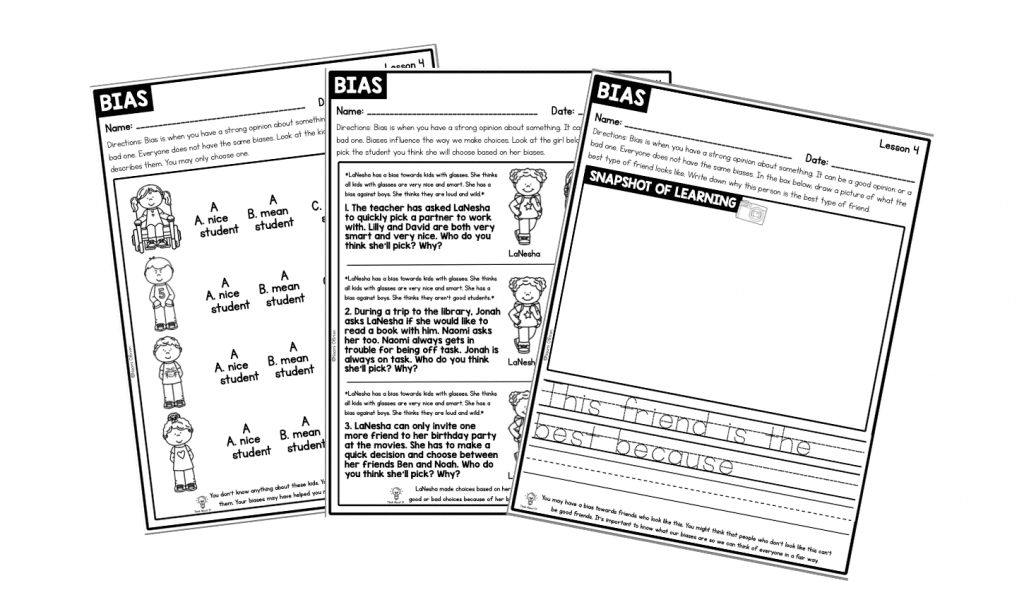
While you can google and find endless books to help teach young kids about bias, here are some titles to get you started. You can pull out a bias conversation with almost any book, especially if you are reading diverse stories. Ask students what they think about a topic before and after reading. Help them identify how they had hidden biases, and how they could behave differently based on these biases. Reading itself is a great way to challenge beliefs when we cannot have all the experiences.
All the books listed for diversity, race, and identity are also great to use to teach young kids about bias.
Some good follow up questions to ask while reading these stories:
You can continue important conversations by exploring the Perspectives Through Picture Books series. The resource shared in this blog post can be found here.
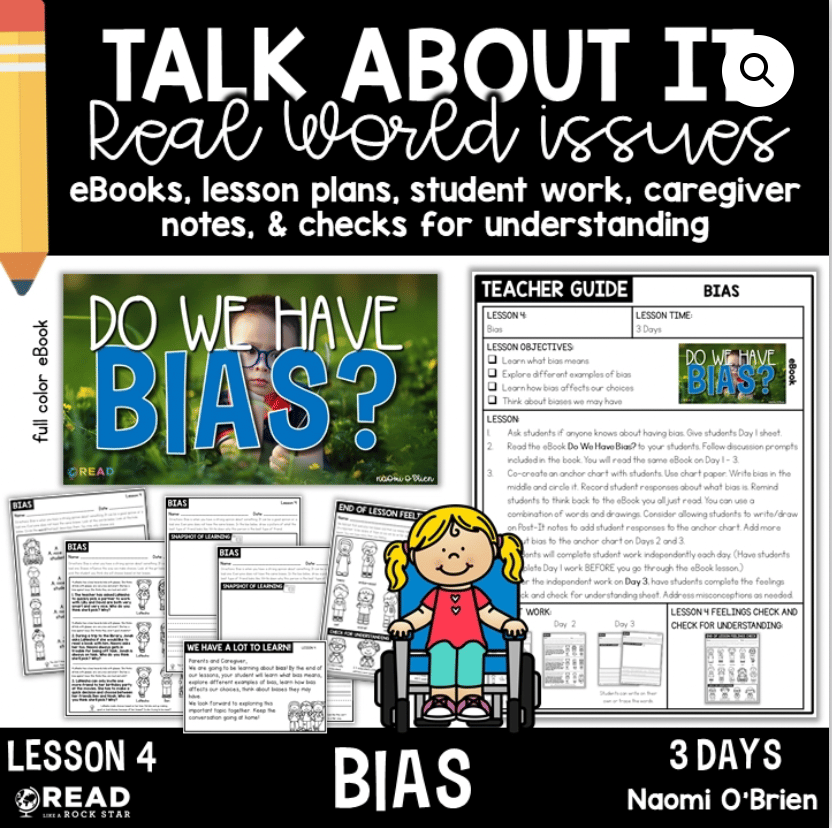
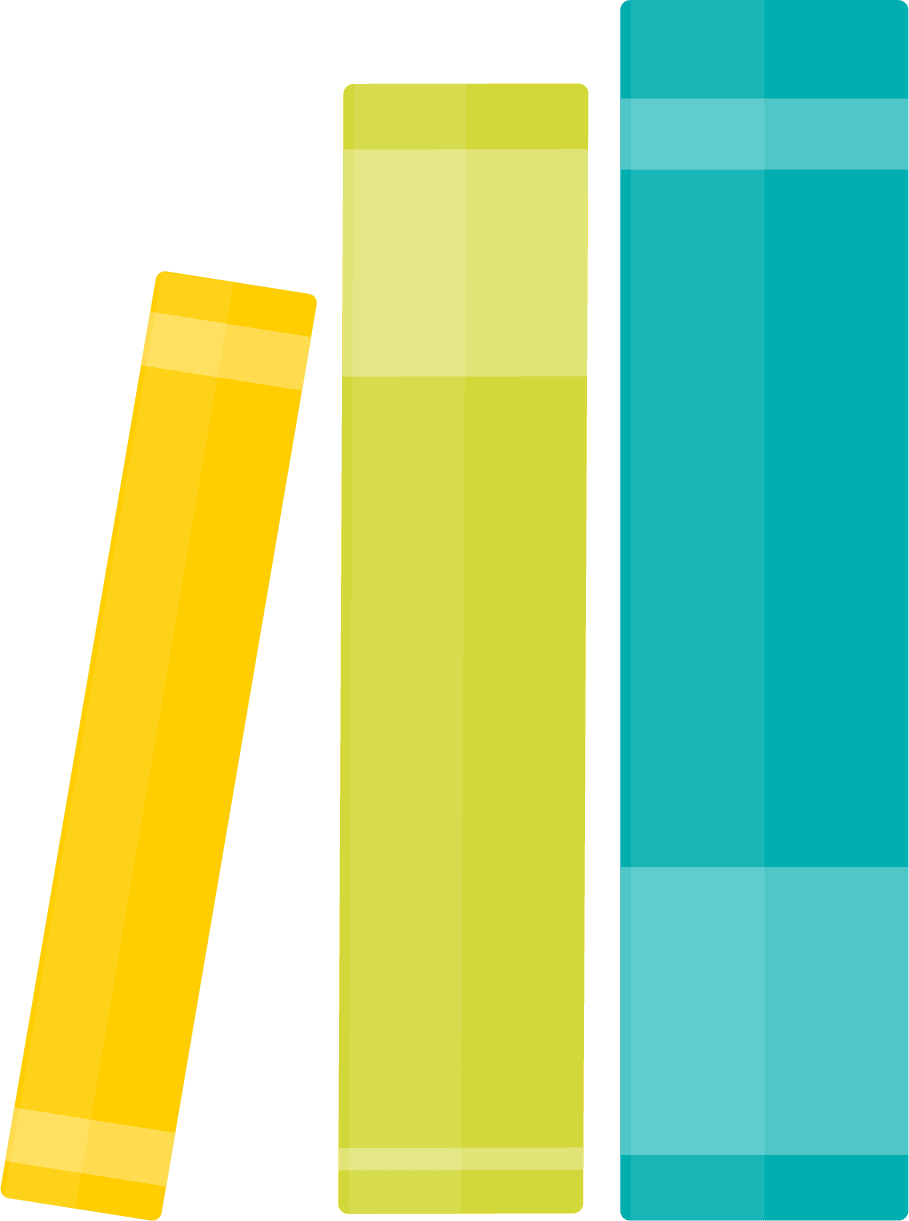
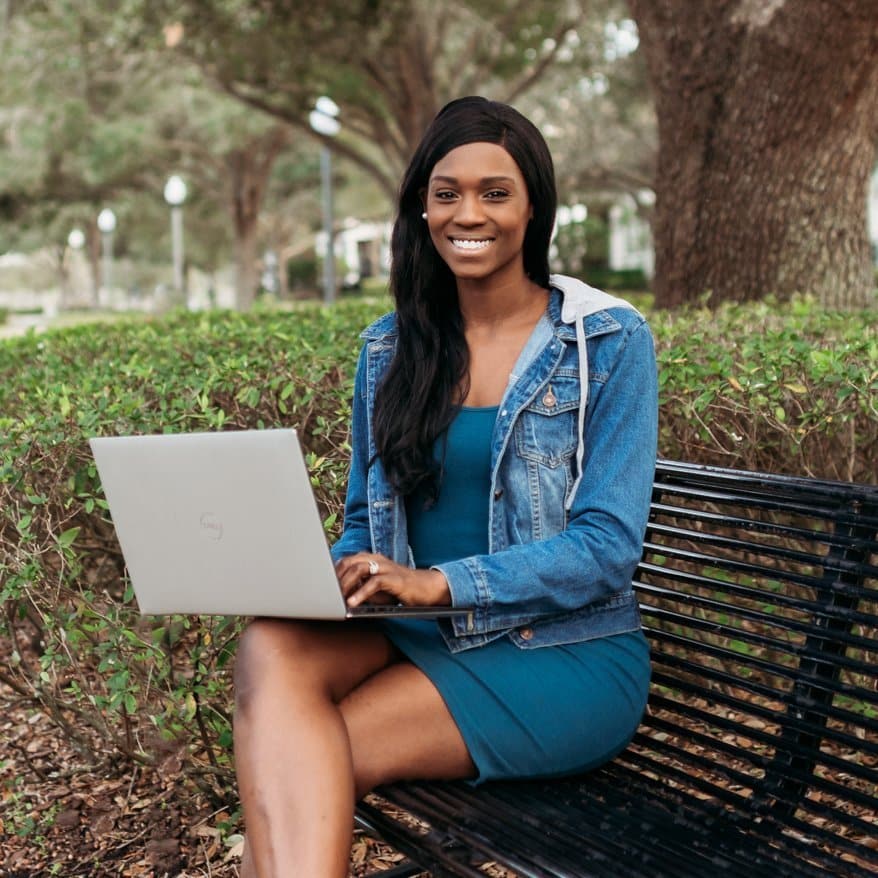
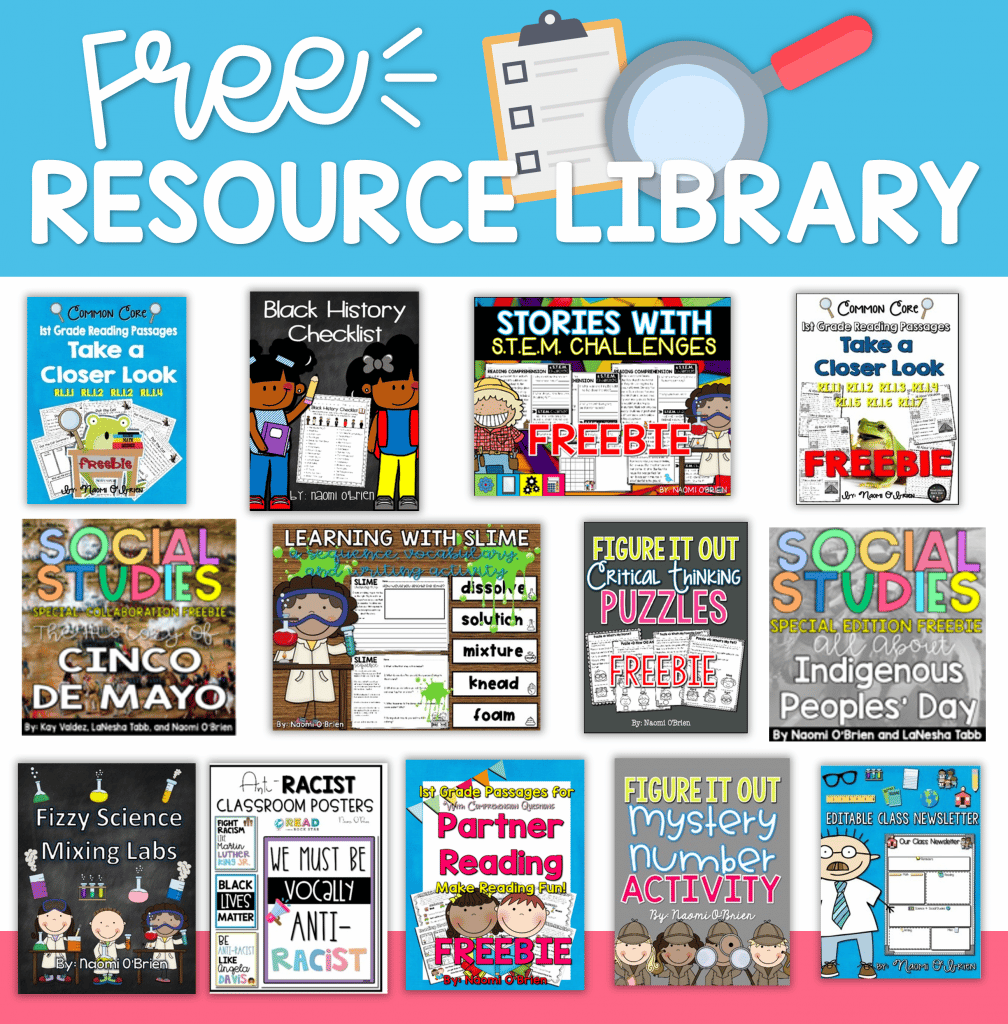
| Cookie | Duration | Description |
|---|---|---|
| cookielawinfo-checkbox-analytics | 11 months | This cookie is set by GDPR Cookie Consent plugin. The cookie is used to store the user consent for the cookies in the category "Analytics". |
| cookielawinfo-checkbox-functional | 11 months | The cookie is set by GDPR cookie consent to record the user consent for the cookies in the category "Functional". |
| cookielawinfo-checkbox-necessary | 11 months | This cookie is set by GDPR Cookie Consent plugin. The cookies is used to store the user consent for the cookies in the category "Necessary". |
| cookielawinfo-checkbox-others | 11 months | This cookie is set by GDPR Cookie Consent plugin. The cookie is used to store the user consent for the cookies in the category "Other. |
| cookielawinfo-checkbox-performance | 11 months | This cookie is set by GDPR Cookie Consent plugin. The cookie is used to store the user consent for the cookies in the category "Performance". |
| viewed_cookie_policy | 11 months | The cookie is set by the GDPR Cookie Consent plugin and is used to store whether or not user has consented to the use of cookies. It does not store any personal data. |
Thank you for your interest in booking a private professional development experience! Please fill out our Booking Inquiry form and a member of our team will contact you soon.